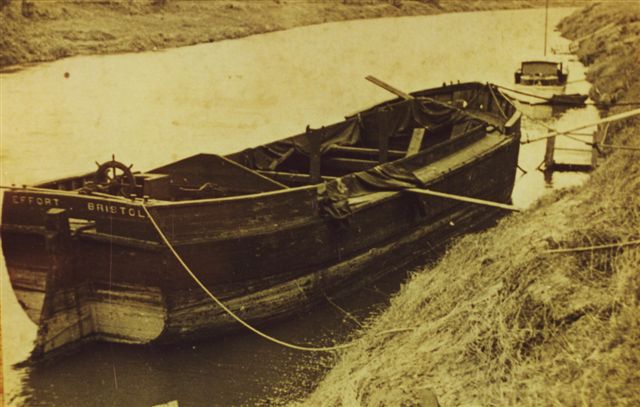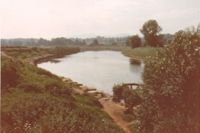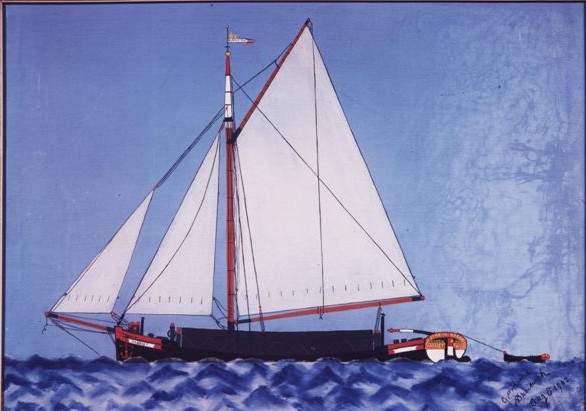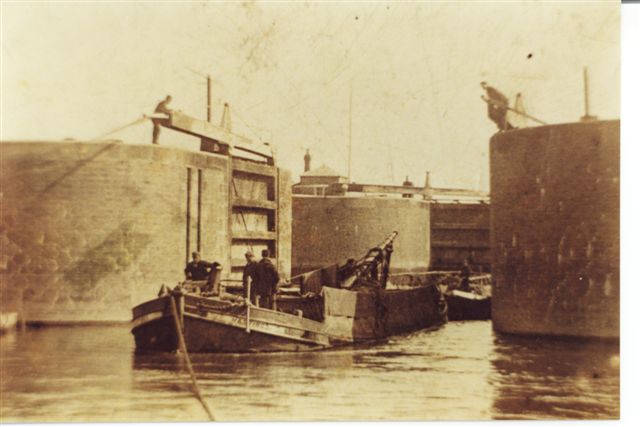Kempsey Shipwreck
Max Sinclair writes: "In 1940 the dismasted Trow 'EFFORT' was brought up from Bristol to Clerkenleap by Ansells Brewery of Birmingham to be used as a 'cellar' for barrels of beer required at the Ketch Inn and the surrounding army camps. It was used through the war but eventually sank and was dragged up on to Kempsey Ham. Over the years it was covered in dredgings emptied from the river barges so that now little of it is left." Max also has sent in this photo.

From Mrs Slocombe's Notes, dated June 1977:
Derelict Boat Below Church
"My husband says to the best of his recollection, it happened about 9 o'clock one June night round about 1957, 8 or 9, when petrol or diesel fuel caught fire, and caught the boat on fire. Mr Norman Dawson was either on the boat or went to tackle the fire, and was very badly burned in the process.
At the time the boat was at the 'Kempsey Moorings', the field at the bottom of Court Meadow Lane, and later it was towed to its present position and 'beached' to help prevent further erosion caused by the wash from river tankers, and other craft at that bend in the river."
|
Editor's notes:
Location
The shipwrecked boat lies about 100 meters south of where Hatfield Brook flows into the River Severn.

|
| Overgrown Barge |
Trows
Max Sinclair wrote in and sent the following photos: This stylised painting of the Trow 'Harriet' by George Harris a Droitwich bargeman clearly shows the rope rigging in detail. The mast was stepped in a three sided frame open at the rear but closed with an iron pin or rope lashing. From the top of the mast a forestay ran down to the bow winch. To lower the mast the pin was removed and the winch slackened off to let the mast fall towards the stern.The reverse operation pulled the mast up.

The Droitwich Trow 'Hastings' leaves Tewkesbury Lock with 90 tons of Salt for France. The mast was lowered for Worcester Bridge and will be raised when it reaches Gloucester.At Sharpness a long wooden keel will be hauled under the flat bottom to enable the Skipper to sail to windward.

|
© 2001 - Andy Morrall
Last updated 21st July 2006.
 hits since 17th January 2003.
hits since 17th January 2003.